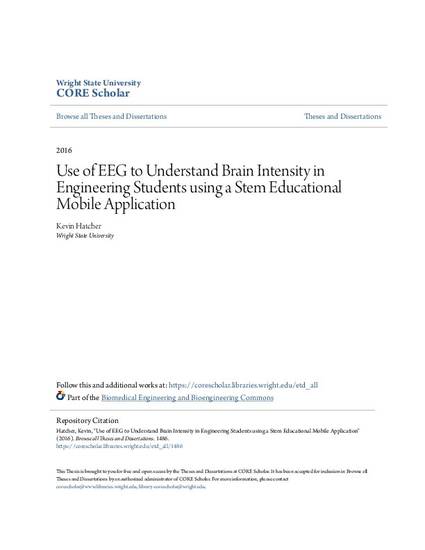
Thesis
Use of EEG to Understand Brain Intensity in Engineering Students using a Stem Educational Mobile Application
(2016)
Abstract
In the first two years of undergraduate work in engineering, students are taught concepts such as physics, electronics, and most importantly calculus. It is especially important for students to get a better grasp on foundational math concepts, such as calculus in the beginning or they will be overwhelmed by the workload to come. The focus of this research was to understand how students learning calculus, could benefit from an augmented-educational mobile application. In the study students were measured with electroencephalography (EEG) measurements utilized by the Emotive EPOC® as they attempted to solve different limit themed problems in order to determine if learning with an augmented educational mobile application had an impact on brain intensity. Results indicated that mobile learners showed increased intensity in selected brain regions when compared to non-mobile learners. This study will aid in better understanding the impact that an augmented-education mobile application can have on learning.
Keywords
- EEG,
- Brain,
- STEM,
- Mobile
Disciplines
Publication Date
Spring April 18, 2016
Degree
Master of Science in Engineering (MSEgr)
Department
Biomedical, Industrial & Human Factors Engineering
Citation Information
Kevin Hatcher. "Use of EEG to Understand Brain Intensity in Engineering Students using a Stem Educational Mobile Application" (2016) Available at: http://works.bepress.com/nasser_kashou/54/
